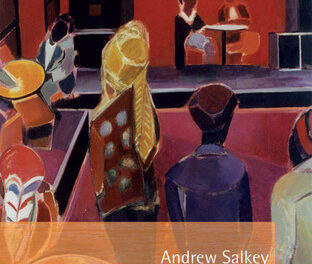
Hild is born into a world in transition. In seventh-century Britain, small kingdoms are merging, usually violently. A new religion is coming ashore; the old gods’ priests are worrying. Edwin of Northumbria plots to become overking of the Angles, ruthlessly using every tool at his disposal: blood, bribery, belief.
Hild is the king’s youngest niece. She has the powerful curiosity of a bright child, a will of adamant, and a way of seeing the world—of studying nature, of matching cause with effect, of observing human nature and predicting what will happen next—that can seem uncanny, even supernatural, to those around her. She establishes herself as the king’s seer. And she is indispensable—until she should ever lead the king astray. The stakes are life and death: for Hild, her family, her loved ones, and the increasing numbers who seek the protection of the strange girl who can read the world and see the future.
As Nicola Griffiths points out in her Authors Note, what we know about Hild’s life, especially her early life, comes from one source – the Venerable Bede’s Ecclesiastical History of the English Nation – and can be summed up in a single paragraph. We don’t where she was born. We don’t know what she looked like. And until she was recruited into the Church in 647, we have no idea of her skills, her wants, her desires. For all intents and purposes Hild is a clean slate. And Griffith’s novel takes full advantage of this.
In the filling the gaps Griffith’s has done a massive amount of research to bring Hild and her world alive. You only need to have read her blog for the last couple of years to understand how much time she has spent bringing as much realism and truth to her text. And at no point during the novel does she ever break that strong sense of verisimilitude. When you enter Hild’s world you are entering 7th Century Britain. So much so that a number of readers – if Goodreads is any indication – have found the novel too difficult to parse with its unpronounceable names and weird language.
But the brilliance of this book isn’t the amount of research on show. The brilliance is how Griffiths brings these characters to life without ever applying a 21st Century gloss on who they are. If Hild frees her slave later in the novel it’s not because Griffith has turned her into an abolitionist, but because Hild has acted within the bounds of her society and the power she holds.
And it would have been so easy for Griffiths to make Hild more sympathetic, make her more like us. For one, her ‘visions’ for the King – Sherlockian like deductions based on her observations – make her an outsider. Aside from her closest friends, most in the Court are either frightened of her, thinking she’s a witch, or would rather see her dead. It would have been easy, then, to use Hild as a means to commentate on the brutality and savageness of 7th Century Britain. But Griffith refuses to take that option. If anything Hild as an outsider gives Griffith the permission to make her more vicious and brutal then other woman of her time. She learns to fight. She learns to kill. And in one startling and genuinely chilling moment we see her compassion when she decides to take on the responsibility of slitting the throats and bashing in the heads of men injured on the battlefield. A savage act of mercy.
Some might think that if there is a 21st Century gloss on the novel it’s when Hild becomes sexually aware and active. According to Griffiths a number of reviewers have asked her – why make Hild a lesbian. And Griffith’s response:
I say: First, she’s bisexual. Second, why the fuck not?
I’m willing to admit that I had to push back against my instinctual prejudices when Hild’s sexuality began to blossom. Not because I thought bisexuality was so 20th Century (which is just silly) but because the pervasive mythology of Sainthood, and how it revises a person’s history to smooth over their failings and flaws to focus on why they’ve been sainted in the first place, affected the way I read the novel. I simply assumed as a future sister of the Church she would be chaste and virginal, repulsed by the thought of intercourse.
It was a frankly ridiculous and offensive assumption on my part. As Griffith’s states in her Authors Note,
While people in Hild’s time may have understood their world a little differently from how we understand ours, they were still people – as human as we are. Their dreams, fears, political machinations, fights, loves and hesitations were shaped by circumstance and temperament, as are ours.
And Hild was no different. Just because she was eventually sainted doesn’t mean she didn’t have the same needs and desires as everyone else. The mythology of sainthood might require perfection – but it’s one that does so by ignoring what makes us human. Griffith’s refuses to do that with Hild. Refuses to sugar coat her story simply because Hild’s potted history ends with a beatific face staring out from a stain glassed window.
Hild may trip the reader up with its strange language and its stranger names, but at the end of the day this is a remarkable character study of a young woman trying to navigate the challenges of her society and her environment.


Yeah I think I am going to have to read this one. Love the period. Big fan of Kim Wilkins’ stuff set around the same time/or inspired by the period.
Of course you’re going to have to read it. I said it was great!